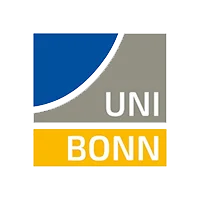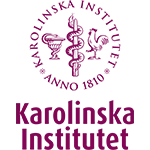Explore the credit course catalogue
9 Results

This workshop provides a hands-on learning experience with a focus on a wider variety of AI tools, their ethical implications and their practical applications. The aim is to facilitate the responsible and efficient use of AI-based tools in research and academia.
Content:
- Understand the importance of using AI in research and academia and assess the benefits and risks involved
- Craft effective prompts for your research tasks
- Develop strategies to integrate AI tools into your research workflow
- Stay informed about and adapt to new developments in the field of AI
At the end of the workshop, you will receive a list of generative AI prompts useful in research and academia. There will be practice sessions during the workshop for which you will need access to AI tools, particularly ChatGPT/GPT-4o. If you do not have an account with ChatGPT/GPT-4o, alternatives like Microsoft Copilot, Google Bard or Claude.ai could also be used.

Do you need to turn data into a publication figure? We offer tools and confidence for the student to independently select a statistical method for research questions in their field. The course is practical and includes implementing a basic statistical analysis in R, the leading statistical programming language in bioinformatics and medical science. Furthermore, we give a brief introduction to visualization in R, with a focus on R/ggplot2. Students can bring data from their own research project, or work on data from the course.

The course content lean on Design thinking ideology and methodology that inform research as well as developmental work and form a practice-based foundation for innovation aimed to meet the needs of societal and scientific environments. As a student, you work individually from your own research perspective, and get helpful insights for future research.
The course apply a problem-oriented teaching and learning style, with a pedagogy that enables students to take active responsibility for individual and also group learning in a multi-disciplinary context.

Progress in medical innovation stands as a catalyst for worldwide economic growth. Whether within pharmaceuticals, medical devices, biotechnology, information technology, or a fusion of these advancements, the potential advantages extend significantly to private businesses and societal well-being. However, due to long development times and rigorous regulations, these innovative concepts require a lot of financing to establish their presence in the market. Consequently, assessing the value of novel medical innovations remains crucial. The primary objective of this course is to empower researchers with the proficient capability to effectively assess the worth of emerging technologies or processes within the medical industry.

The course aim is that the doctoral student develops a theory of science approach by enabling the doctoral student to understand, employ, reflect upon and critically assess concepts and ideas of theories of science as well as their implications for in particular medical scientific practice. A further aim is to enable the doctoral student to understand, reflect upon and critically assess views on and implications of definitions of health and disease.

The course will introduce neuropsychological assessment in an aging population, focusing on age-related cognitive changes and their neural correlates. An additional purpose is to increase understanding of cognitive aging and how to differentiate between non-pathological cognitive aging and early signs of pathology. After the course, you will be able to define and describe common neuropsychological concepts and measurement techniques and demonstrate an overall understanding of neuropsychological investigation methodology and cognitive diagnostics in aging. The course will give you an increased understanding of cognitive aging and the complexity of differentiating between “normal” and early-stage pathological aging.

This course provides a solid ground in neuroscience, including cellular neuroscience, sensory and motor functions, and higher brain functions. It is intended for those lacking a basic neuroscience education. It runs in parallel with the Neuroscince course of the Bachelors programme in biomedicine. The course does not give regular course credits for doctoral students, but can be used to cover the demand of a grounding course in human physiology/pathology.

This course covers the concepts of:
- Mechanisms of axonal transport, neuronal cytoskeleton, neurite outgrowth, extracellular matrix, neurotrophic factors
- Mechanisms of synaptic transmission, vesicles, Snare’s, structure, synthesis and inactivation of neurotransmitters, neurotransmitterreceptors, signal transduction pathways; Pre and post synaptic signal modification
- Specific features of non-neuronal cells astrocytes, oligodendrocytes, microglia, Composition, synthesis and function of myelin, biochemistry and function of astrocytes and microglia; Pathobiochemistry of Alzheimer disease, prion diseases, leukodystrophies, polyglutamin diseases and multiple sclerosis

The course aims to introduce students to human sensory perception with a focus on clinical utility and research. The neurological and evolutionary principles underlying vision, hearing, smell, taste, touch, and additional methods of perception will be covered.
The course will introduce the historical and evolutionary context for our senses, so as to provide an understanding for why humans operate and behave the way we do. Beyond the traditional five senses of vision, hearing, taste, smell, and touch, we will discuss several other sensory modalities available to humans, including the vestibular system. The neurological principles guiding the integration of these senses will be outlined, with special reference to subconscious and conscious decision-making. These systems will then be tested through a series of practical experiments, giving students a chance to reflect on blind-spots in human perception and how to implement these in a scientific and clinical setting. Finally, common sensory pathologies will be discussed.


